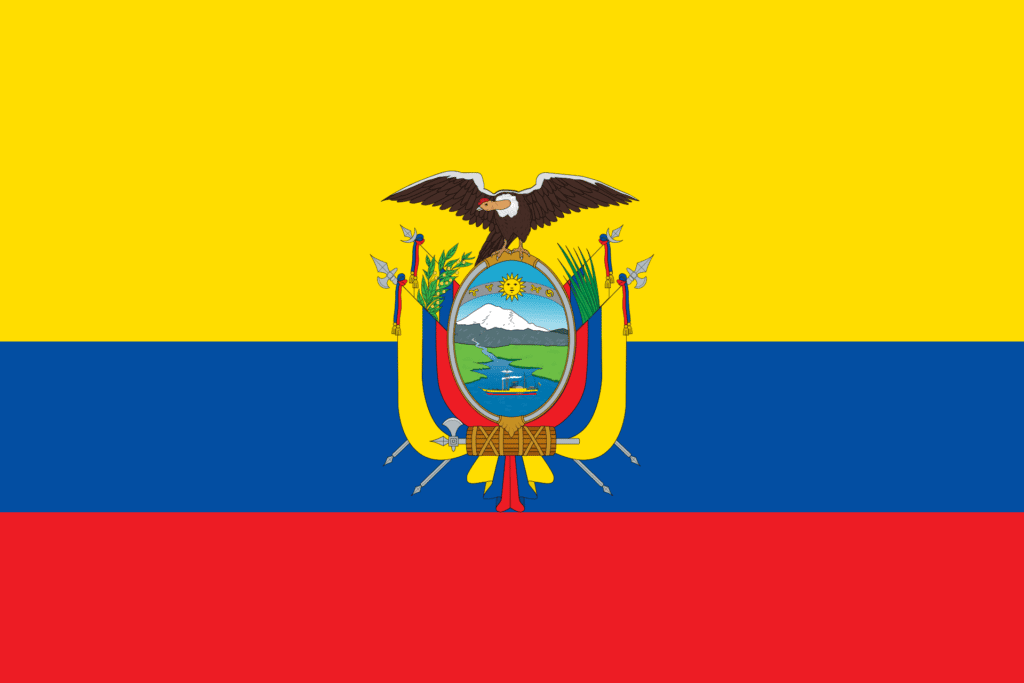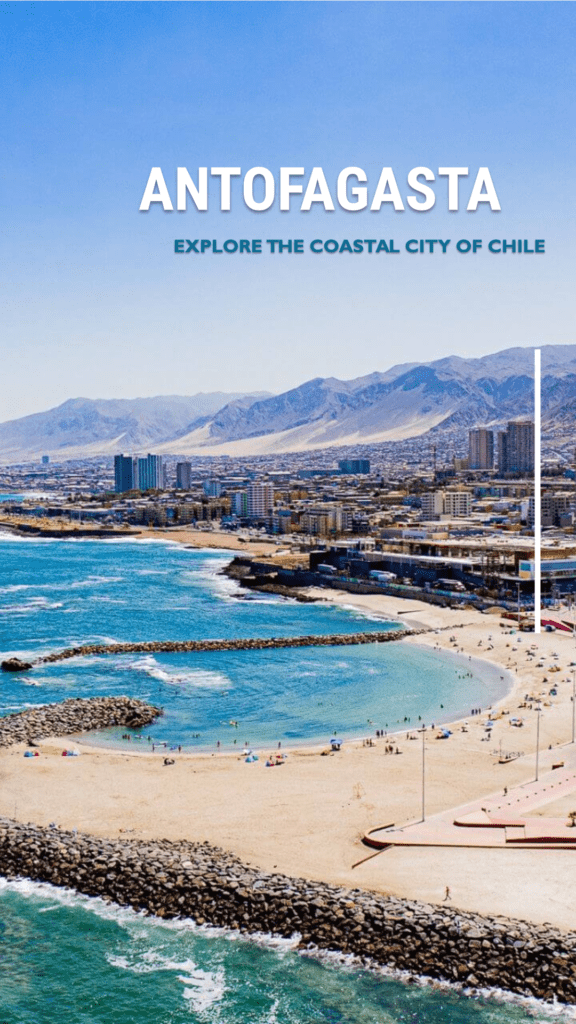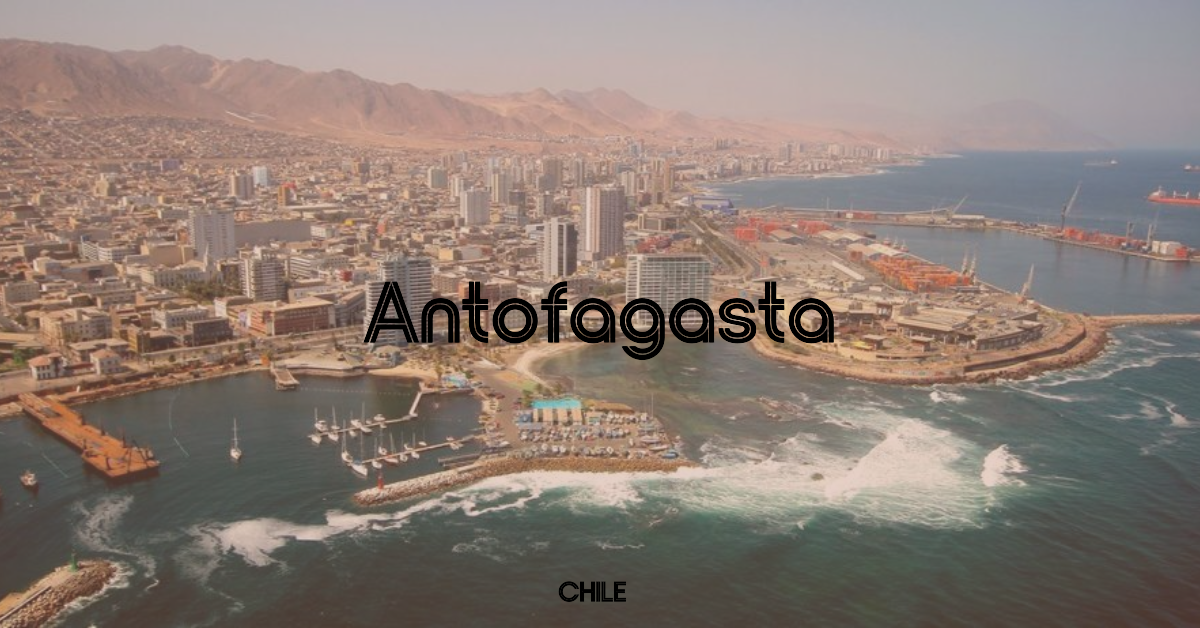Antofagasta
Antofagasta, a city located in the northern region of Chile, serves as the capital of the Antofagasta region and functions as a significant Pacific port situated on Bahía Moreno.
Before 1879, Antofagasta was a Bolivian town, nestled on a terrace at the foothills of the desolate and arid coastal mountains. The city’s initial expansion can be attributed to the nitrate industry’s prosperous era that commenced in 1866, along with the discovery of silver at Caracoles in 1870, which led to the official adoption of the name Antofagasta. The city primarily serves as a hub for supplying mining operations and exporting copper and sulfur. In addition to hosting foundries, refineries, ore-concentration and sulfuric acid manufacturing facilities, Antofagasta boasts local food and beverage processing industries and fish-meal production. Furthermore, the city is home to a shipyard that specializes in trawlers.
As the largest city in northern Chile, Antofagasta is the location of the University of the North, which was established in 1956. The city plays a crucial role as a communication hub along the Pan-American Highway, and it is connected by rail to mining areas, Oruro in Bolivia, and Salta in Argentina, as well as to urban centres to the north and south. Additionally, it features an international airport. In 2002, the population of Antofagasta was 285,255, and by 2017, the municipality’s population had increased to 361,873.
Geography
Antofagasta’s urban expanse abruptly emerges, interrupting the desert’s monotony. It is positioned within the coastal plains, south of the Mejillones Peninsula and north of “Cerro Coloso.” The Tropic of Capricorn runs north of the city, lying beyond the urban area where the Cerro Moreno International Airport is situated. In honour of this geographic feature, the Tropic of Capricorn Monument was inaugurated on December 21, 2000. Designed by architect Eleonora Roman, this monument serves as a marker for the Tropic of Capricorn and a functioning solar calendar.
On July 20, 1999, Antofagasta was officially designated as a partial common area in the border region through Supreme Decree No. 1166 issued by the Ministry of Foreign Affairs.
The city exhibits limited vegetation due to its location within the Atacama Desert, renowned as the driest desert in the world.
Demographics
The population of Antofagasta, Chile, has been growing steadily over the years, primarily due to economic opportunities in the region, including the mining and industrial sectors.
According to the 2017 census conducted by the National Statistics Institute, Antofagasta was home to a population of 388,545 residents. The population experienced a remarkable growth rate of 30.0%, amounting to 68,497 individuals, during the period between the 1992 and 2002 censuses. Experts have further anticipated that over the next decade, the city is poised to attain a population of 500,000 residents.
Antofagasta likely has a diverse age distribution, with a mix of young, working-age, and older residents. The exact age distribution can change over time and may be influenced by factors such as employment opportunities.
Antofagasta has seen migration from other parts of Chile and from other countries due to its economic opportunities. This has contributed to the city’s population growth and cultural diversity.
Sister Cities and Twinning Relationships
Antofagasta, Chile, was twinned with several cities from around the world. Twinning or sister-city relationships are established to promote cultural exchange, cooperation, and understanding between cities.

Ambato, Tungurahua, Ecuador

Split, Split-Dalmatia, Croatia

Tongling, Anhui, China

Volos, Thessaly, Greece
Weather
Antofagasta boasts an arid desert climate featuring gentle temperatures and an exceptionally low precipitation rate. The city is known for coastal fog, or “camanchaca,” which can roll in from the Pacific Ocean, particularly during the cooler months. It can result in overcast conditions and reduce visibility.
Antofagasta is one of the driest cities in the world. It receives extremely low annual rainfall, with most months experiencing no significant precipitation. The rainy season, if it occurs, is usually between June and August, but even then, the amount of rainfall is minimal.
Antofagasta can experience occasional strong winds, particularly during the spring and early summer months. These winds are known as “la garúa” and can bring cooler air from the ocean.
Overall, Antofagasta’s weather is characterized by a dry desert climate with mild temperatures and an abundance of sunshine.
Transport
Antofagasta is connected to the broader region and neighbouring countries by a network of roads and highways. The Pan-American Highway, a major route that spans the Americas, passes through the city. This road network facilitates the transportation of goods and people to and from Antofagasta.
Cerro Moreno International Airport serves Antofagasta and is located to the north of the city. This airport offers domestic and international flights, connecting the region to other parts of Chile and international destinations.
Antofagasta is a significant port city on the Pacific Ocean. The port handles the export of minerals and other goods, making it a crucial component of the regional economy.








